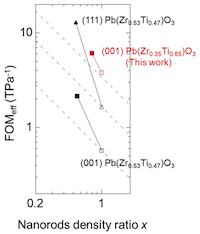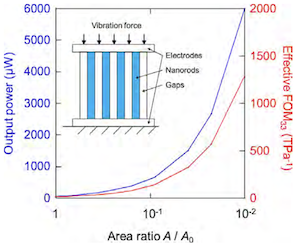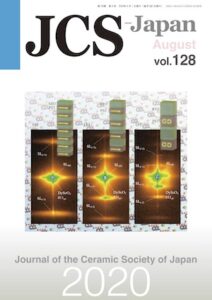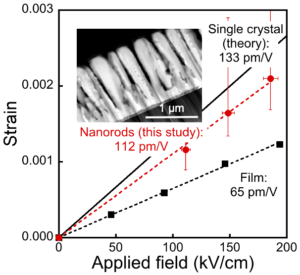Prof. Tomoaki YAMADA received the Richard M. Fulrath Award of the American Ceramic Society for his work on Bottom-up Growth Design and Property Control for Dielectric Thin Films and Nanostructures.
Published: Enhanced FOM in PZT Nanorods for Piezoelectric Energy Harvesting
Our paper entitled “Enhanced Figure of Merit in Pb(Zr,Ti)O3 Nanorods for Piezoelectric Energy Harvesting” has been published in AIP Adv. We experimentally clarified that the effective figure of merit (FOM) of the PZT nanorod array can be enhanced by the decreased density. This approach enables us to independently control the piezoelectric and dielectric constants of materials, making it possible to lower the effective dielectric constant while maintaining the piezoelectric constant. The results indicate that piezoelectric nanorods are a prospective candidate for small-sized PEHs where the cantilever-based PEH cannot be used at a resonant frequency.
Citation: AIP Adv. 10, 105101 (2020).
Published: AAPPS Bulletin
Our article entitled “Ferroelectric Nanorods: Control and Application to Piezoelectric Energy Harvesting” has been published in AAPPS Bulletin. We introduced our resent activity on ferroelectric nanorods toward piezoelectric energy harvesting.
Citation: AAPPS Bull. 30, 16-21 (2020).
Published: PST/STO Artificial Superlattice Thin Films
Our paper entitled “(Pb0.9Sr0.1)TiO3/SrTiO3 Artificial Superlattice Thin Films and Their Electromechanical Response” has been published in J. Ceram. Soc. Jpn. We grew (Pb0.9Sr0.1)TiO3 n/SrTiO3 m artificial superlattice thin films, and investigated their electromechanical response. Synchrotron XRD indicated that the film with n/m = 14/20 had a weak periodicity in the in-plane direction, which may have arisen from the ordered polar vortex arrays existing in the PST layers. All the fabricated superlattice thin films showed the electric field-induced strain, though its magnitude was smaller than that for typical ferroelectric materials.
Citation: J. Ceram. Soc. Jpn. 128, 431-435 (2020).
Published: Enhanced Intrinsic Piezoelectric Response in c-domain PZT Nanorods
Our paper entitled “Enhanced Intrinsic Piezoelectric Response in (001)-epitaxial Single c-domain Pb(Zr,Ti)O3 Nanorods” has been published in Appl. Phys. Lett. The PZT nanorods were self-assembled and grown on the substrate at an elevated oxygen pressure by PLD, and showed a complete c-domain structure. Time-resolved X-ray diffraction measurements under an applied electric field show that the fabricated PZT nanorods exhibit a piezoelectric constant, d33, that is significantly higher than that of thin PZT films and comparable to that for unclamped single-domain bulk crystals, which is thought to be due to a significant reduction in substrate clamping. The obtained results demonstrate that the self-assembled nanorods can achieve an enhanced intrinsic piezoelectric response, which makes them attractive for a range of practical applications.
Citation: Appl. Phys. Lett. 117, 042905 (2020).
Awarded: Shinya KONDO
Shinya KONDO won the Best Student Paper Award of Journal of the Ceramic Society of Japan for his paper on theoretical estimation of linear electro-optic effect in strained (Ba, Sr)TiO3 films.
Citation: J. Ceram. Soc. Jpn. 127, 348-352 (2019).




